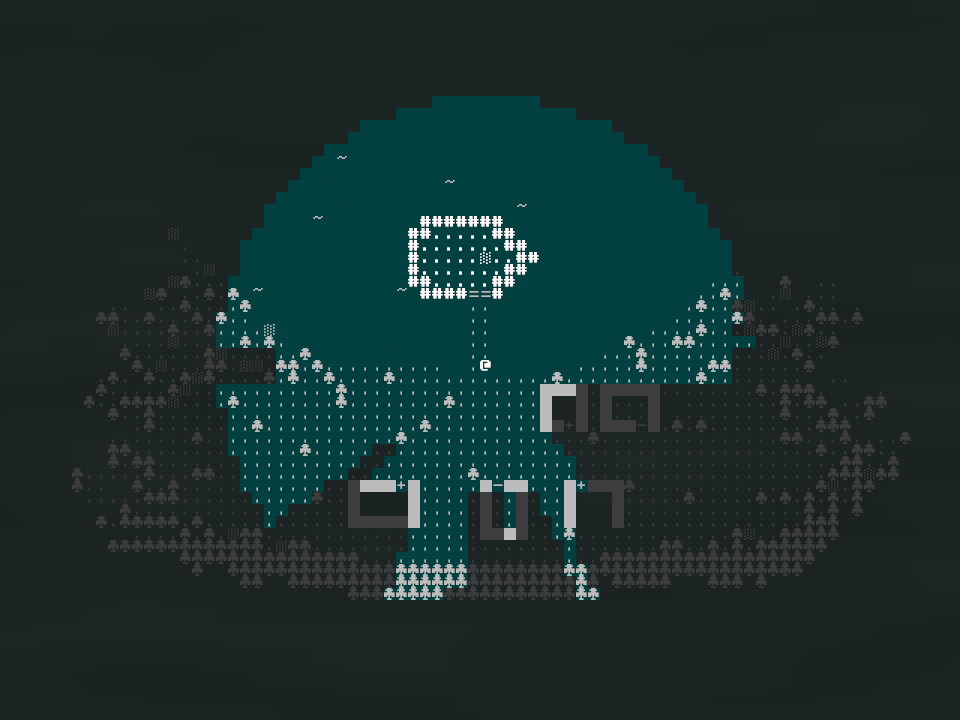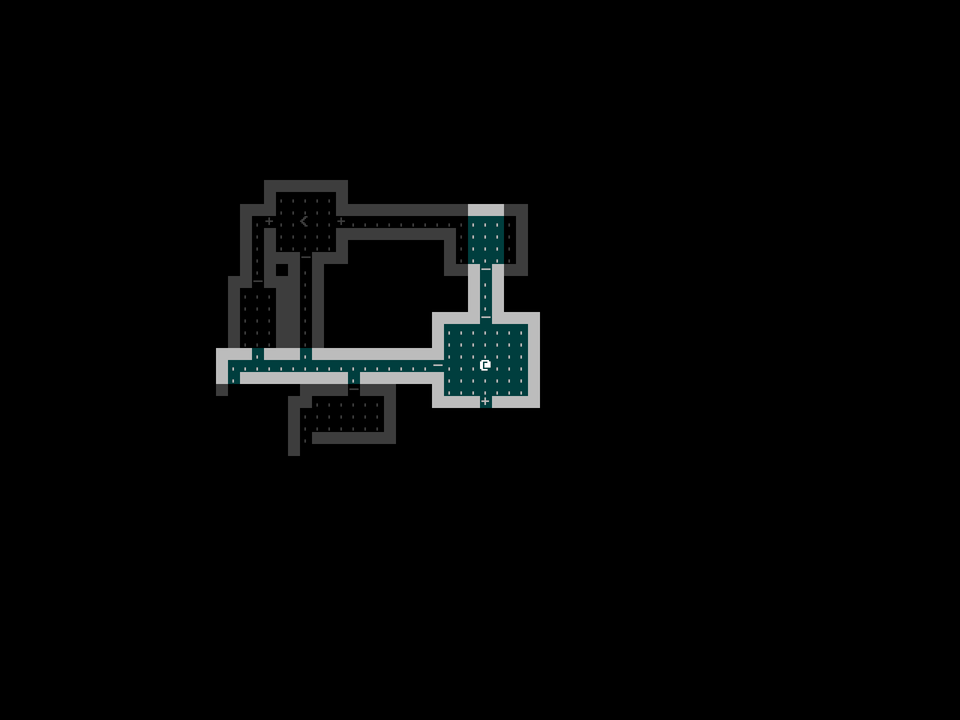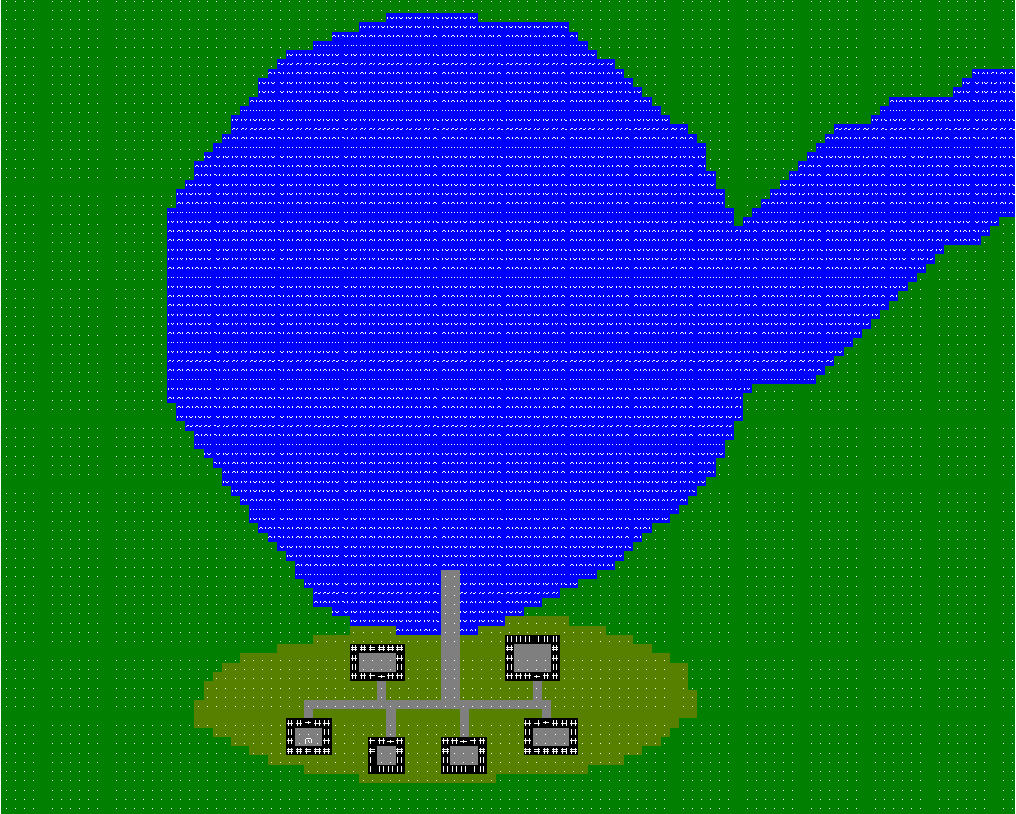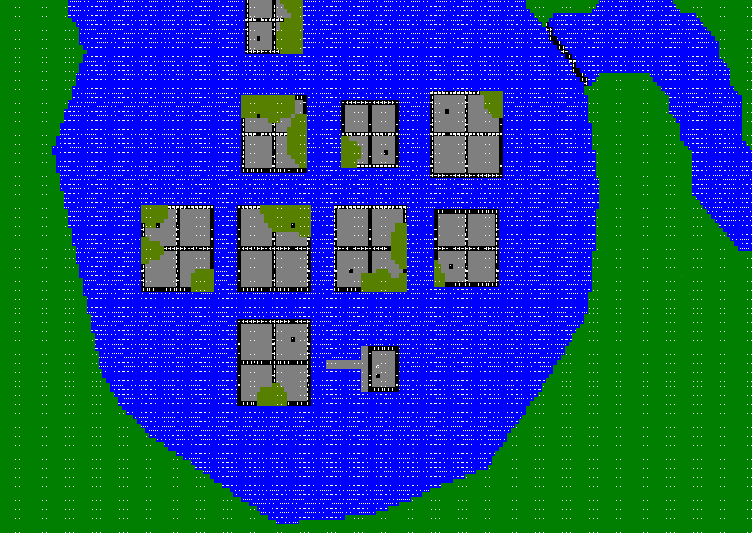7 Day Roguelike 2023: Even More Procedural Generation!
Yet another day of working on procedural generation and I think I’m finally finished (the procgen - not the game!). I added a generator for the starting town, a swamp area, a flooded city area, and dungeons which are accessible from the city.

The city section has a sluice gate that has rusted through and leaked water into the city causing it to flood, but the gate is still shut and it blocks the path of the player to get out of the city and reach the ocean. There are bunkers under the city that have controls for the gate. Some buildings have stairs that lead to the bunkers (the ‘>’ tiles).

Going down the stairs takes you to a bunker. I used a fairly standard dungeon generator here because I don’t want to spend any more time on procedural generation. This dungeon generator is borrowed from a half-finished tutorial on how to use my game engine. It populates dungeons with rooms, corridors, and doors. It generates dungeons with loops, is conceptually simple and easy to implement. I’m really happy with the dungeons it generates. I might write a blog post about this algorithm after the game jam.

Unlike all my previous games this one takes place in a single giant level (except for the tiny dungeons under the city). The map is about 500 tiles wide so it’s too wide to comfortably fit on my screen. To debug the terrain generator I made a small program that renders a simplified view of the generated terrain to a terminal and used a tiny font to quickly iterate on terrain generation without having to start the game engine.
Here’s how the starting town looks in the debugging view:

And this is how the city looks:

My plan for tomorrow is to add a fuel system, a passenger system, and a time system, where you lose if you end up on the river after dark. Part of the generated terrain includes an inn in both the swamp and the city where you’ll be able to trade for fuel and wait out the night.